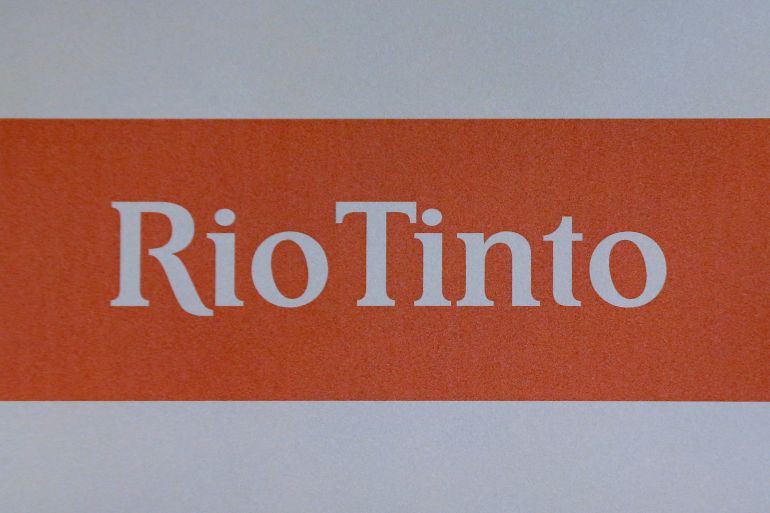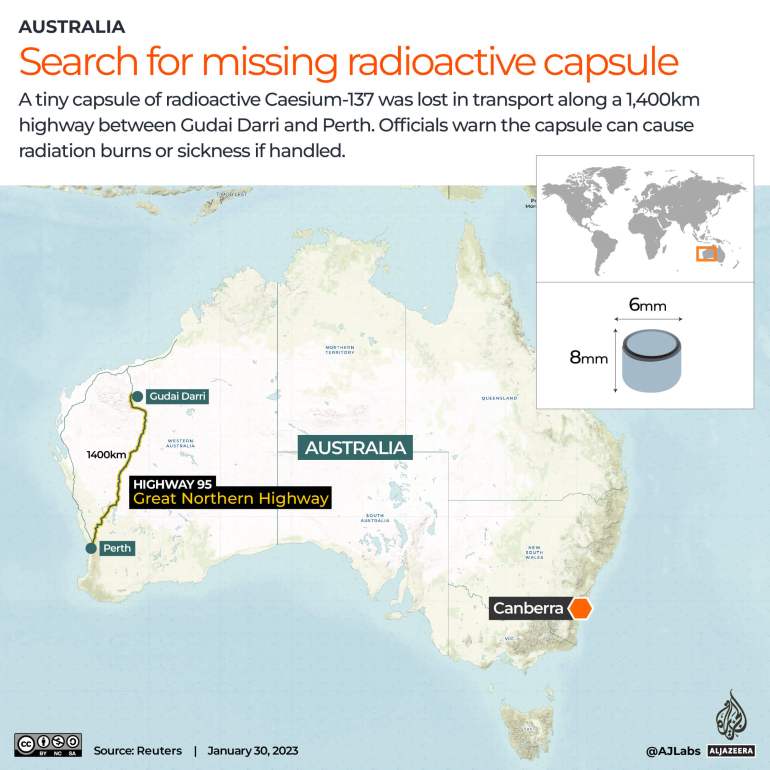Rio Tinto apologises as search for radioactive capsule continues
A radiation alert is in force for parts of Western Australia after a tiny capsule containing Caesium-137 was lost.

Mining giant Rio Tinto has apologised as the search continues for a tiny radioactive capsule that went missing while it was being taken to a storage facility in Perth, triggering a radiation alert in parts of Western Australia.
The silver-coloured capsule, just 6mm (0.24 inches) wide and 8mm (0.31 inches) long, was lost as it was being transported from Rio Tinto’s Gudai-Darri mine near Newman, in the remote Kimberley region, to a storage facility some 1,400km (870 miles) away in Perth.
Keep reading
list of 4 itemsRio Tinto chairman quits over Aboriginal site damage in Australia
Native Americans try to block US move to give land to Rio Tinto
‘Never again’: Rio Tinto blasted over Juukan Gorge destruction
It is unclear how long the tiny capsule, which contains Caesium-137, a radioactive isotope that emits radiation equal to 10 x-rays per hour, has been missing.
The capsule left the site on January 12, and the contractor hired by Rio Tinto told the company it was missing on January 25. The public was alerted two days later.
Rio Tinto said it was taking the disappearance very seriously.
“We recognise this is clearly very concerning and are sorry for the alarm it has caused in the Western Australian community,” Simon Trott, Rio Tinto’s iron ore division chief, said in a statement on Monday.
“Rio Tinto engaged a third-party contractor, with appropriate expertise and certification, to safely package the device in preparation for transport off-site ahead of receipt at their facility in Perth,” he said, adding that Rio was also conducting its own investigation into how the loss had happened.
Before the device left the site, a Geiger counter was used to confirm the presence of the capsule inside the package, Rio Tinto said. Authorities believe that the device fell out of the truck as it was being moved.
“We have completed radiological surveys of all areas on site where the device had been, and surveyed roads within the mine site as well as the access road leading away from the Gudai-Darri mine site,” Trott said.
Authorities have recommended people stay at least five metres (16ft) away, and a radiation alert across parts of the vast state remains in place.
Health officials have warned the capsule could cause radiation burns or sickness if handled.
“The concern is someone will pick it up not knowing what they are dealing with,” said Dr Andrew Robertson, chief health officer for Western Australia.
The capsule was packed in accordance with the radiation safety transport and regulations inside a box bolted onto a pallet, he added.
“We believe the vibration of the truck may have impacted the integrity of the gauge, that it fell apart and the source actually came out of it,” Robertson said. “It is unusual for a gauge to come apart like this one has.”
The state’s Department of Fire and Emergency Services has deployed teams with handheld radiation detection devices and metal detectors along 36km (22 miles) of the busy freight route to look for the container.
“What we’re not doing is trying to find a tiny little device by eyesight,” said Superintendent Darryl Ray, adding they were concentrating on populated areas north of Perth and strategic sites along the Great Northern Highway.
“We’re using the radiation detectors to locate the gamma rays,” he said.
Authorities are also using the truck’s GPS data to determine the exact route the driver took and where it stopped after it left the mine. It arrived at the Perth depot on January 16.
There are concerns it could have become lodged in the tyres of a vehicle travelling on the same road.
